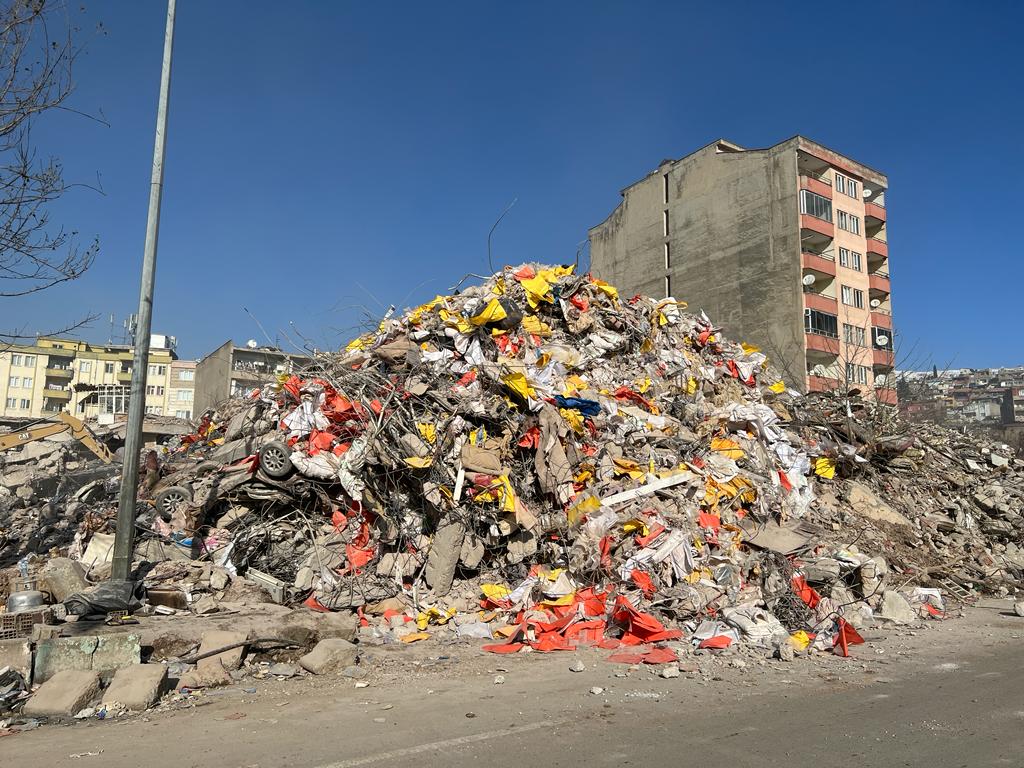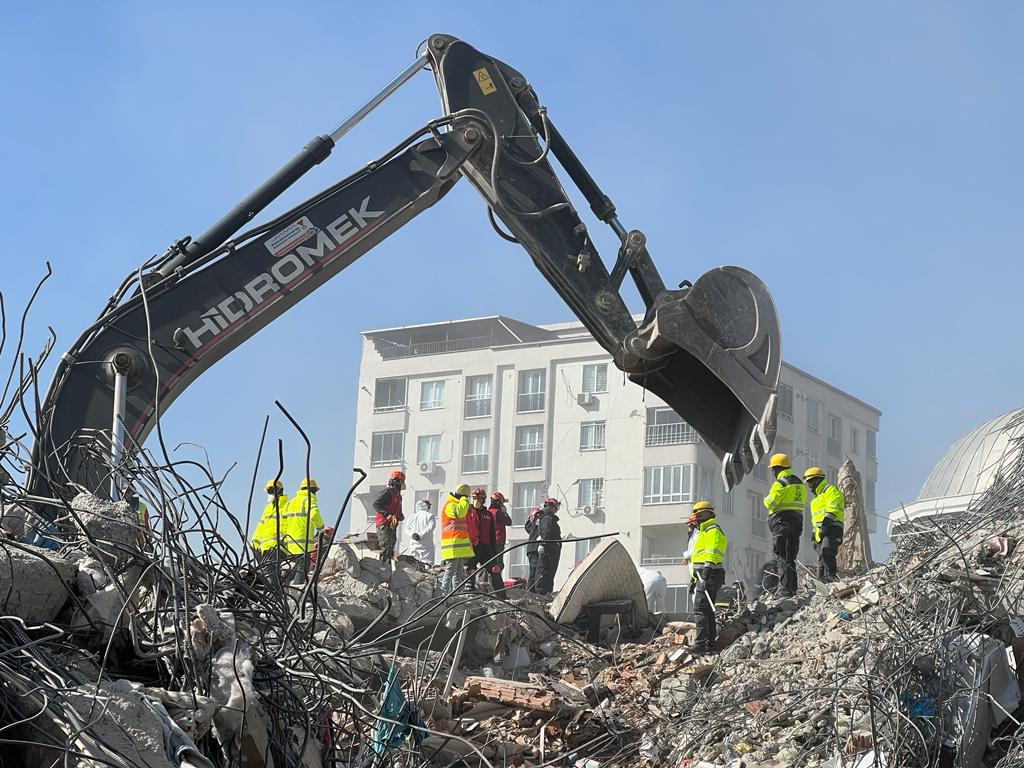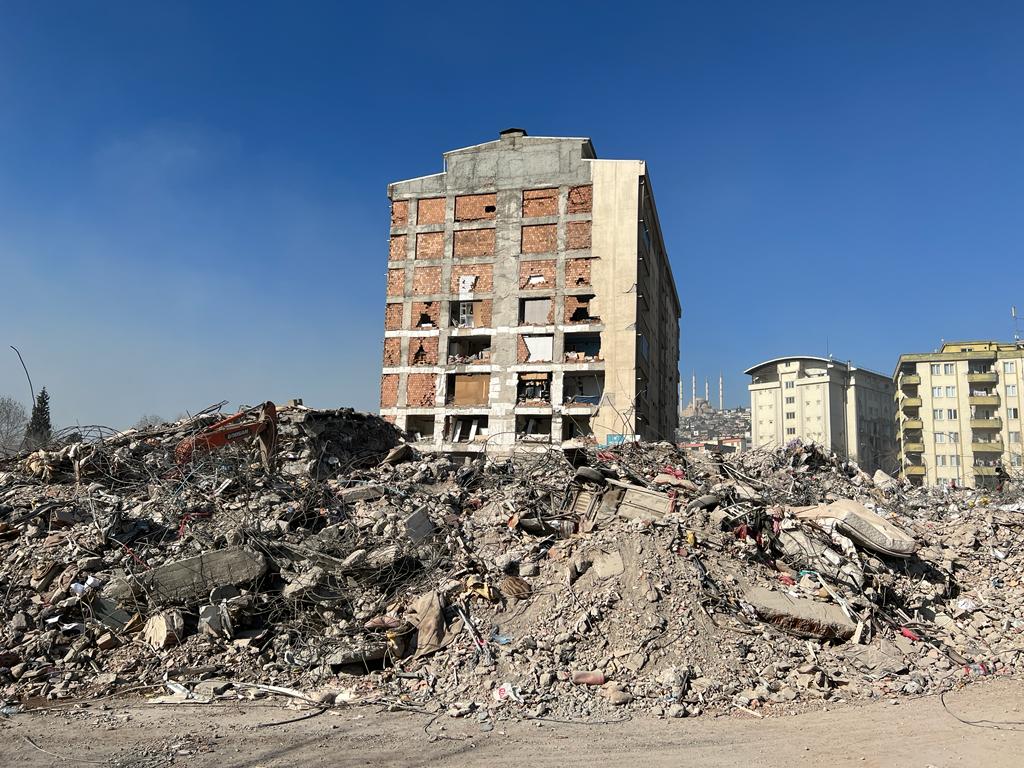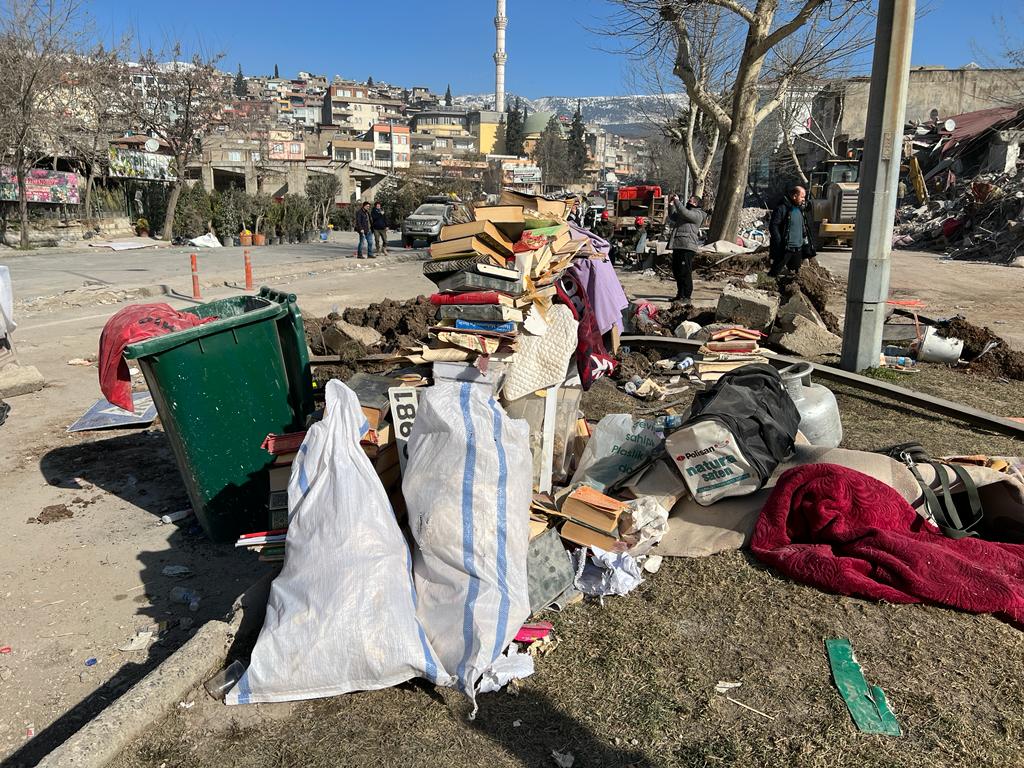
Kahramanmaras, Turkey – The air in Kahramanmaras is heavy. It is hard to breathe, full of dust and toxic smoke.
Survivors in this southeastern Turkish city, closest to the epicentre of a devastating magnitude 7.8 earthquake last week, burn plastic to stay warm amid freezing temperatures. Plumes of grey dust can be seen for miles as recovery operations stir the debris.
Several thousands of buildings have collapsed in parts of Turkey and Syria where a series of massive earthquakes on February 6 have killed more than 36,000 people so far.
In Kahramanmaras, nearly 1,000 buildings have collapsed and more than 600 people are confirmed to have died.

But many buildings that are still standing in the city are no longer safe to live in either, forcing many survivors to face the harsh winter in the open air.
In a frantic race against time, rescuers and families still continue to look for survivors one week on.
Meanwhile, many dead bodies remain buried under the buildings: On Sunday, as temperatures finally rose, the odour of rotting bodies became discernible.
It was the stench of death.
Turkish President Recep Tayyip Erdogan visited the city on Wednesday amid growing anger from those left destitute and frustrated over the slow arrival of rescue teams.
He admitted to problems with his government’s initial response.
But some Turks were more forgiving than others. Sedat Kavsut, 40, and his brother Ahmet, 48, were watching over their damaged apartment block in Kahramanmaras, hoping to salvage some belongings. They were keen to praise the state.
“The government is working well here,” said Sedat. He said they are sleeping in a municipal building where they also receive food. They feel safe entering there, but not other buildings.
“The biggest issue I face is psychological – when I enter a building I can’t even [urinate], I’m so nervous,” he said.

Others were praising the goodwill of fellow citizens.
Abdülrahman Razmur was trying to reach his family’s collapsed apartment block on Monday morning, when his car gave up. So passersby helped Razmur jump-start his car battery by lending him jump leads to be able to reach the 11-floor building.
“There are international rescue teams there,” he said of the apartment block.
“Yesterday they found three people under the rubble with a thermal camera. At 9pm there was another aftershock; now, they can’t detect anyone.”
Meanwhile, on what remained of the sidewalk, rescuers had piled up what they had managed to salvage: Books that tell stories of families killed and injured, and lives upended.
Reporting by Patrick Keddie in Kahramanmaras








